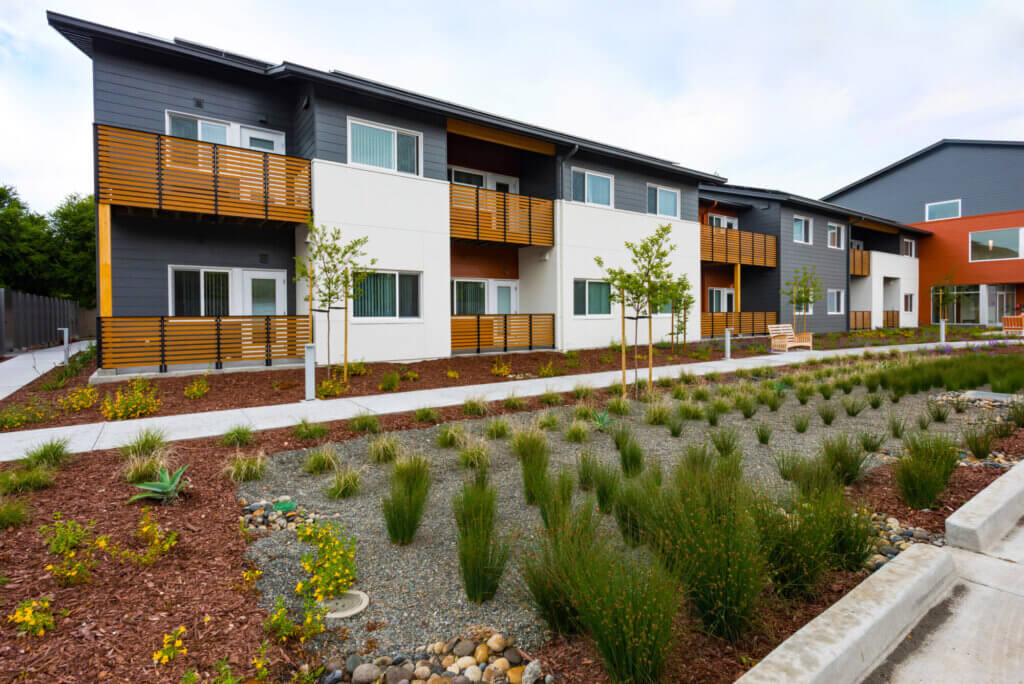Addressing the Structural Foundations of Homelessness in the Bay Area
Published On December 2, 2021
On the Edge of Homelessness: The Vulnerability of Extremely Low-Income Households in the Bay Area presents data on the demographic, housing, and labor market characteristics of ELI households in the 9-county Bay Area region. The paper highlights the role of structural inequities, including a frayed social safety net, the lack of sufficient affordable housing supply, and rising income inequality, in the housing insecurity of ELI households.
The research was completed in partnership with All Home, with the goal of providing data that can help to inform their regional strategy to end homelessness.
Below find a summary blog from the author, our Faculty Research Advisor Carolina Reid.
The severity of the Bay Area’s homelessness crisis is visible everywhere—from the tents that crowd under freeways to the increasing number of people sleeping on sidewalks and in doorways. Largely hidden from view, however, are the 457,000 extremely low-income (ELI) households in the region who are making ends meet on an average of $18,000 a year. Over half of ELI households are precariously housed, meaning that they don’t receive any housing assistance and pay more than 30 percent of their income for housing. These households—which include seniors living on fixed incomes, single parents juggling work and child care responsibilities, and essential workers making poverty wages—are at significant risk of housing insecurity and homelessness.
In a new research paper, On the Edge of Homelessness: The Vulnerability of Extremely Low-Income Households in the Bay Area, we present data on the demographic, housing, and labor market characteristics of ELI households in the 9-county Bay Area region, highlighting the structural inequities that contribute to their vulnerability to becoming unhoused. The research was done in partnership with All Home, with the goal of providing data about the ELI population that can help to inform their regional strategy to end homelessness.
The statistics paint a sobering picture. The average cost-burdened ELI renter spends more than 75 percent of their income on housing costs, leaving them with an average of $360 dollars a month to pay for everything else. Almost half of working-age adults living in ELI households earn poverty wages (even as they provide critical services to the region’s economy, working in child care, health care, janitorial, and food services). ELI households are also more likely to include people of color: more than a quarter (26.2 percent) of Black individuals in the Bay Area live in an ELI household, compared to just 9 percent of non-Hispanic White individuals.
The failures of public policy to address ELI households’ needs are equally sobering. The social safety net in the United States has long been in tatters: the average monthly SSI payment received by someone with a disability in the Bay Area is a mere $690 (the maximum allowed in most cases is around $1,000 a month, well below the poverty line). Housing assistance is also scarce; less than 20 percent of ELI renters in the Bay Area receive a housing subsidy. And, in the midst of a global pandemic, approximately 70 percent of ELI working adults don’t have access to employer provided health care. These structural failures lead to high rates of housing insecurity among ELI households, and increase their risk of becoming unhoused.
The upshot? Ending the visible homelessness crisis in the Bay Area will only be possible if the region addresses the larger, invisible crisis of housing insecurity among ELI households.
To do this, we will need policymakers at the regional, state and federal level to focus on three overarching reforms:
– Invest in building a strong and inclusive social safety net. For too long, public policy has privileged narratives of welfare dependency over the actual evidence that a robust safety net leads to better outcomes, especially for children. Investing in household financial stability is precisely what allows people to thrive.
Take just one example: in Stockton, residents living at or below the median income were given $500 a month, no strings attached, for two years. These residents didn’t squander the money or stop working—instead, they invested it in housing, health care, and their children’s well-being. Researchers found that having more income actually increased participants’ full-time employment, from 28 to 40 percent. Other research done by the Terner Center similarly shows that access to affordable housing allows households to invest in economic mobility strategies for themselves and their children.
The Build Back Better Act, passed in the U.S. House of Representatives on November 19, 2021 and now up for debate in the Senate, is a step in the right direction. The Act includes key provisions that will help ELI households in the Bay Area, including increasing funding for affordable housing and making the child tax credit permanent for very low-income families. We need to ensure that these provisions remain in the final version of the bill, as well as strengthen the region’s capacity to deploy these funds effectively (for example, by removing local barriers to new affordable housing development).
– Build more housing, while at the same time targeting subsidies for those most in need. As long as the Bay Area fails to build enough housing to meet demand—including market-rate supply—the pressure on the existing stock will continue to displace more ELI households from their homes and the region and contribute to an ever-worsening affordability crisis. Reducing zoning barriers to new housing development, streamlining approvals, holding cities accountable to their RHNA targets, and lowering the costs of construction through modular all need to be part of the solution to build more housing.
There also needs to be a more explicit focus on expanding subsidies for ELI households, in the form of either tenant- or project-based assistance. The Build Back Better Act may provide much-needed federal housing assistance, but it is unlikely to be sufficient on its own to address the gap in ELI housing in the region. Additional efforts to create and sustain dedicated funding to build affordable and supportive housing units (such as the state’s innovative Homekey program), as well as new sources of long-term operating funds to subsidize rents for ELI households will also be needed.
– Raise wages and build pathways for economic mobility among ELI workers. Rising income inequality threatens the region’s economic vibrancy. The middle-wage jobs that have long served as stepping stones between low- and high-wage occupations are disappearing, meaning that many ELI workers are trapped in low-wage work. Labor market reforms including higher wages, expanded access to health care benefits, child care and family leave, and worker protections would all help to ensure that jobs offer a basic level of financial security and stability. Investing in workforce development, supporting the development of worker cooperatives, and converting contract positions to full-time work with benefits could further help to boost wages for ELI workers and create pathways for economic mobility.
Ending homelessness in the Bay Area will require a strong commitment at all levels of government, including the political will not only to address the immediate crisis of people living on the street, but also to change the underlying structural conditions that create housing insecurity for ELI households. All Home is a regional organization whose mission is to do both those things. Learn more about their work on behalf of people with extremely low incomes in the Bay Area at allhomeca.org.





